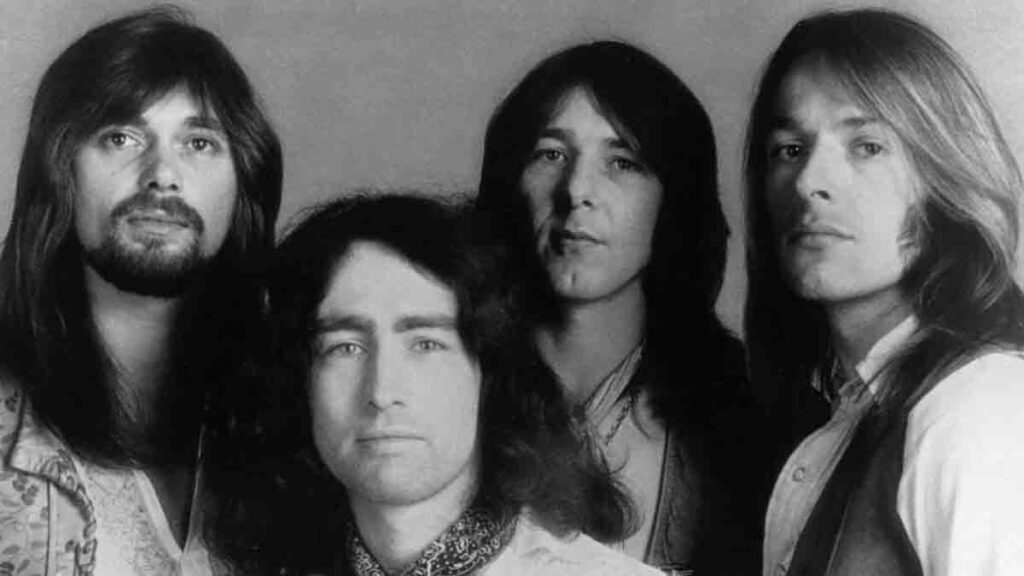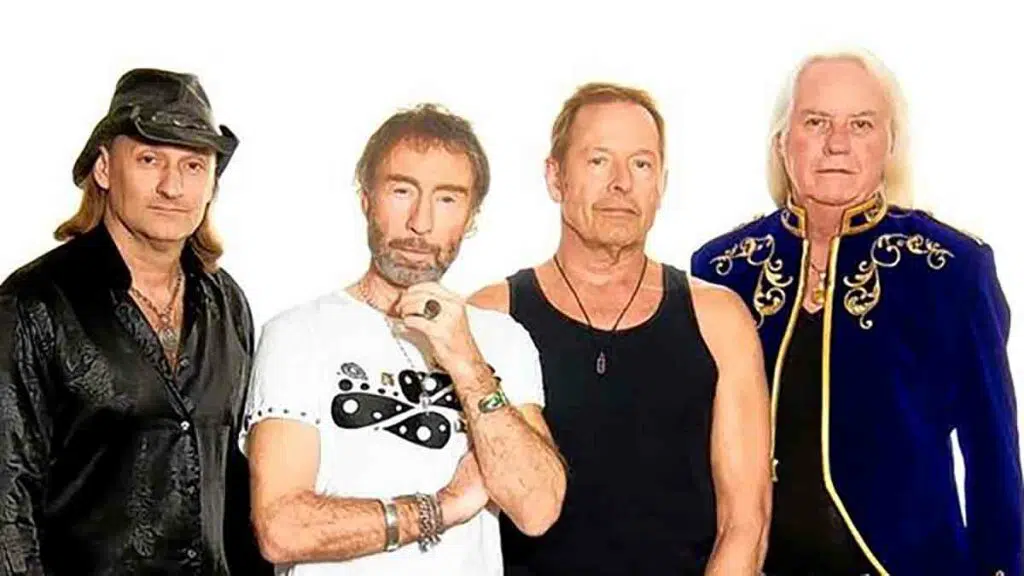Throughout the history of pop music, there are many musical projects that fall under the category of "supergroup". These are the cases when famous performers decide to unite for further joint creativity. For some, the experiment is successful, for others not so much, but, in general, all this always arouses genuine interest in the audience. Bad Company is a typical example of such an enterprise with the prefix super, playing an explosive mixture of hard and blues-rock.
The ensemble appeared in 1973 in London and consisted of singer Paul Rodgers and bassist Simon Kirk, who came from the group Free, Mike Ralphs - ex-guitarist of Mott the Hoople, drummer Boz Burrell - a former member of King Crimson.
The experienced Peter Grant, who made a name for himself by working with Led Zeppelin. The attempt was a success - the Bad Company group instantly became popular.
Bright debut of Bad Company
Started "Bad Company" just great, refuting the common notion: "as you call a ship, so it will float." The guys did not think for a long time about the name of the disc: only two white words flaunted on the black envelope - “Bad Company”.

The disc went on sale in the summer of 74, and immediately shot: No. 1 on the Billboard 200, a six-month stay in the UK album chart list, gaining platinum status!
Subsequently, it was included in the hundred most commercially successful albums of the seventies. A couple of singles from it took high places in the charts of different countries. In addition, the team has gained a reputation as a strong concert band, able to start the hall from the first chords.
Almost a year later, in April '75, the group released their second album, called Straight Shooter. The continuation turned out to be no less convincing - with high positions in various ratings and tops. Critics and listeners especially liked two numbers - Good Lovin' Gone Bad and Feel Like Makin' Love.
Without slowing down, in the next 1976, the "bad boys" recorded the third musical canvas - Run with the Pack. Although it did not cause much excitement, like the first two, it also turned out to be good in terms of implementation. It was felt that the former enthusiasm and ardor of the musicians was slightly extinguished.
In addition, they were psychologically affected by the death from a drug overdose of their mutual friend, a guitarist named Paul Kosoff. Rogers and Kirk, in particular, knew him from working together in the group Free. According to old memory, the virtuoso was invited to take part in the Bad Company tour, but the venture was not destined to come true ...
On the knurled track Bad Company
A couple of subsequent albums contained a lot of good material, but not as juicy and beautiful as on the previous ones. Burnin' Sky (1977) and Desolation Angels (1979) are enjoyed by rock fans even today. In fairness, it is worth noting that since that period the band's career has gone downhill, it began to gradually lose its former demand among the consumer of a musical product.
Burnin' Sky, as if by inertia, became golden, but music critics considered the songs on it to be rather stereotypical, with predictable moves. To a large extent, the musical atmosphere also influenced the perception of the work - the punk revolution was in full swing, and hard rock with blues motives was not perceived as favorably as ten years earlier.
The fifth album of Desolation Angels was not much different from the previous one in terms of interesting finds, but it contained the coolest hit Rock In' Roll Fantasy and a fair percentage of keyboards. In addition, the Hipgnosis design bureau did their best to create a stylish cover for the record.
It became completely alarming for the fate of Bad Company when its financial genius in the person of Peter Grant, whose business acumen largely contributed to the commercial success of the group, lost interest in it.
Grant hit hard after the news of the death of a close friend, Zeppelin drummer John Bonham, in 1980. All this indirectly affected everything that the famous manager was in charge of and did.
In fact, his wards were left to their own devices. Within the team, squabbles and strife intensified, it even reached hand-to-hand combat in the studio. The controversial album Rough Diamonds released in 1982 can be considered the beginning of the end.
And although it has a certain charm, great musical sequences, variety and professionalism, it felt like the work was done under duress, for the sake of commercial obligations. Soon the original composition of the "company" was disbanded.
Second coming
Four years later, in 1986, the bad guys returned, but without the usual Paul Rogers at the micron rack. Vocalist Brian Howe was brought in to fill the vacancy. Before the tour, the ensemble and bass player Boz Burrell were missing.
He was replaced by Steve Price. In addition, the keyboardist Greg Dechert, who took over the album Fame and Fortune, refreshed the sound. Guitarist Ralphs and drummer Kirk remained in place and formed the core of the cult band. The new work was a XNUMX% AOR, which, despite the modesty of chart achievements, can be considered a classic of style.
In 1988, a disc called Dangerous Age was released with a smoking teenager on the sleeve. The record went gold, on which Howe unfolded in full force as a vocalist and author of melodic and energetic songs.

Tensions between the frontman and the rest of the band's musicians grew permanently in the group, the album Holy Water (1990) was recorded with great difficulty, even though it had a good box office after its release.
Problems were exposed while working on the next disc with the prophetic title Here Comes Trouble (“Here Comes Trouble”). The guys finally quarreled, and Howe left the group with an unkind feeling.
In 1994, Robert Hart joined the squad instead. His voice is recorded on the Company Of Strangers and Stories Told & Untold albums. The latter turned out to be a collection of new songs and re-hashings of old hits, featuring several guest stars.
In the future, several more reincarnations of the stellar team took place, in particular, with the return of the charismatic Paul Rogers. It is still felt that the aging veterans have not yet lost their enthusiasm, it’s a pity, only every year the realization comes more and more clearly: yes, guys, your time has irretrievably gone ...



